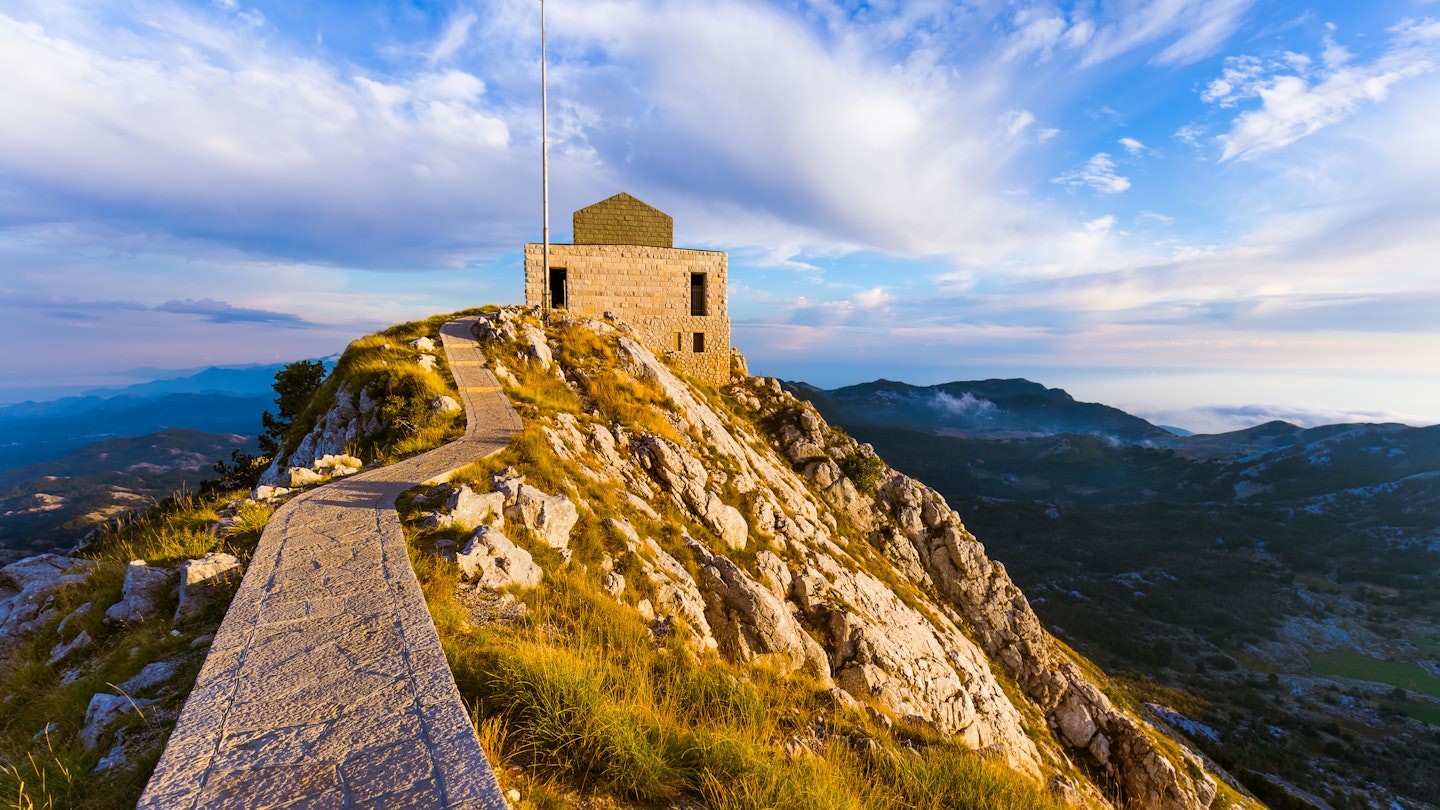Montenegro may be famed for the beauty of its Adriatic coastline dotted with stunning beaches and coves; however, even more treasures await you inland. Five national parks with distinctly different landscapes preserve the impeccable unspoiled scenery and create a wonderland of outdoor adventures amidst deep river gorges and rugged mountains.
Pack up your beach towel and tear yourself away from the coast – it’s time to immerse yourself in Montenegro’s wild side. Here’s everything you need to know about its national parks.
1. Hike the Mountain Trails of Lovcen National Park
If you visit just one Montenegrin national park, make it Lovcen. Looming above the Bay of Kotor, Lovcen is the black mountain that gave Montenegro its name, sprawling over its slopes. For centuries, this karst massif was the very crucible of Montenegrin culture, and it remains the nation’s spiritual hub. The old royal capital, Cetinje, nestled on its slopes, makes a perfect base for exploration.
There’s a visitor center in the hamlet of Ivanova Korita where you can gather information on Lovcen’s numerous hiking and mountain-biking tracks. The park’s most famous feature is the striking Njegoš Mausoleum, containing the tomb of the philosopher-poet Petar II Petrović-Njegoš, sitting at the top of its second-highest peak at 1657m (5436ft). Stunning statues by acclaimed sculptor Ivan Mestrovic compete for attention with the extraordinary views of the craggy landscape.
Planning tip: As you loop back to your start point, be sure to stop for a snack at the village of Njegusi, famed for its prosciutto, cheese, and honey.

2. Spot Myriad Bird Species in Lake Skadar National Park
Split between Montenegro and Albania, Lake Skadar is the largest lake in the Balkans and one of the most important habitats for wetland birds in all of Europe. The entire Montenegrin side of the lake has been protected as a national park since 1983. Birdwatchers come from around the world to spot the 270 species that shelter here, including the endangered Dalmatian pelican and a globally significant population of pygmy cormorants.
Boats and kayaks can be rented from the lake’s main settlement, Virpazar, for exploring at surface level. Birdwatching expeditions can be combined with visits to tiny islands on the lake, home to medieval monasteries and the historic prison fortress, Grmozur.
Planning tip: Remote Murici, on the lake’s southwestern shore, is one of Montenegro’s best beaches, reachable within a 40-minute drive from Virpazar.

3. Hike the Trails of Durmitor National Park
The jewel in the crown of Montenegro’s national parks is the mountainous Durmitor in the country’s untamed north. This dramatic reserve boasts around 50 peaks higher than 2000m (6562ft) and 18 glacial lakes known as gorske oci, meaning “mountain eyes.” The park also encompasses Tara Canyon, a remarkable gorge carved by the Tara River over millennia.
Rafting is an exhilarating way to see the canyon, with operators offering trips along the last 18km (11 miles) of the gorge, where most rapids are found. In winter, Durmitor transforms into a major ski destination, offering reliable snow cover and various ski centers. In summer, hiking and mountaineering take center stage with 150km (93 miles) of marked trails.
Planning tip: Just south of the national park, the remarkable Nevidio Canyon is a favorite spot for canyoning, accessible only during the dry months of July and August.

4. Hike the Forests of Biogradska Gora National Park
Located within the Bjelasica mountain range, Biogradska Gora National Park protects an exceptionally lovely area of virgin forest. From the park entrance, you can take a short trip to the tree-lined Lake Biograd. Here you will find facilities including a campsite, rental services for rowboats and kayaks, and a restaurant serving traditional Montenegrin fare.
An easy stroll around the lake leads to inquiries at the visitor center about more challenging hiking routes through the mountains, including overnight adventures and exploration of glacial lakes.
Planning tip: In summer, consider multi-day hikes through the park, staying overnight in katuns, the traditional wooden huts used by semi-nomadic shepherds.

5. Trek the Wilds of Prokletije National Park
For true wilderness, visit Montenegro’s newest national park, dedicated in 2009 to protect a 161-sq-km (62-sq-mile) expanse of the Prokletije Mountains bordering Albania and Kosovo. This high section of the Dinaric Alps is one of Europe’s least-explored corners. Prokletije translates to “accursed,” hinting at the challenging terrain.
If you seek extraordinary beauty in a rugged environment, this park is a perfect choice. Start at the town of Gusinje to explore the 17th-century Vizier’s Mosque and the nearby Ali Pasha Springs, which emerge from the karst rocks.
Planning tip: Before entering Prokletije National Park, stop at the visitor center for information on advanced routes and local guides.




